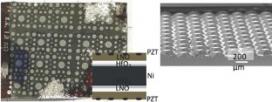ERC-Designed Smart Insole Measures Mobility to Detect and Reduce Injury Risk
The Advanced Self-Powered Systems of Integrated Sensors and Technologies (ASSIST) team at North Carolina State University, an NSF-funded Engineering Research Center (ERC), designed a smart shoe insole intended to detect and reduce injury and monitor disease progression. The wireless insole collects information about the user’s mobility through state-of-the-art sensors.
Gait, balance, and level of activity are indicators of injury risk or deteriorating health for individuals living with chronic conditions that affect mobility, such as cerebral palsy or arthritis. By incorporating self-sensing material into a self-powered, wearable device, mobility health indicators can be monitored in real time.
Mobility is an important health indicator. According to the Centers for Disease Control and Prevention, falls result in more than 3,000,000 trips to the emergency room and 32,000 deaths annually among older adults. The smart insole created by the Center can detect movement patterns that could potentially harm lower-body musculoskeletal health or indicate deteriorating health, such as impaired movements from the effects of a stroke.
The technology was configured using an entirely new class of nano-composite foam pressure sensors that capture gait characteristics previously only measurable in highly controlled laboratory conditions. The device is inserted into the heel of a running shoe and powered by the wearer’s movement, eliminating the need for batteries or recharging.



